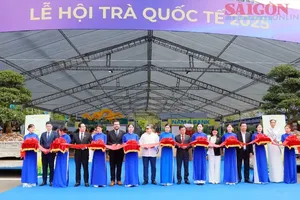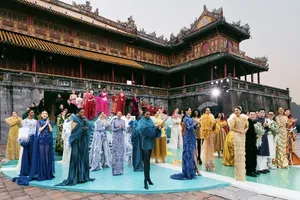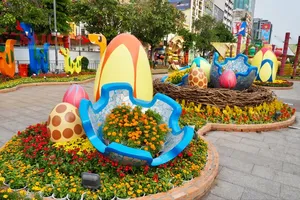)
On May 30, 1979, the Vung Tau–Con Dao Special Zone was established. In 1991, Con Dao became a district of Ba Ria–Vung Tau Province. Beginning July 1, 2025, Con Dao officially became a special administrative zone of Ho Chi Minh City.
Over the past 50 years, regardless of Con Dao’s shifting administrative affiliations, cultural professionals, especially those working in heritage preservation in Ho Chi Minh City, have remained steadfast in their collaboration with colleagues in Con Dao. Shortly after April 30, 1975, the Exhibition House for U.S. and Puppet Crimes (now the War Remnants Museum) connected with Con Dao to establish thematic exhibitions. Following that, nearly all museums formerly managed by the Department of Culture and Sport of Ho Chi Minh City maintained cooperative ties with the Management Board of the Con Dao National Historic Site and the Con Dao Museum.
Among the institutions fostering ties with Con Dao, alongside the War Remnants Museum, the Ton Duc Thang Museum stands out as one of the most deeply connected. President Ton Duc Thang, a former Con Dao prisoner, was among the revolutionary figures who helped write the island’s heroic chapter in Vietnam’s history, often referred to as 'hell on earth'. Since the 1990s, the Ton Duc Thang Museum has featured an exhibit recreating the "Rice-Milling Cellar" in Con Dao, telling the story of “cap rang,” who are typically common criminals convicted of serious offenses such as murder or robbery, which has drawn strong interest from visitors over the years.
For nearly half a century, Ho Chi Minh City’s cultural sector has remained deeply committed to supporting Con Dao with unwavering dedication. Many of the city's cultural sector members were former Con Dao prisoners. For them, that so-called ‘hell on earth’ holds an enduring place in their revolutionary lives. With heartfelt sincerity, they have continued to contribute to enhancing the cultural identity of Con Dao and improving the spiritual life of its people.
Now that Con Dao has officially become part of Ho Chi Minh City, the metropolis boasts an impressively rich cultural heritage map, featuring four Special National Historical Sites, including Con Dao, the Ho Chi Minh Trail at Sea (Loc An port), the Cu Chi Tunnels, and the Independence Palace, alongside 100 national historical sites. These include 58 from the former Ho Chi Minh City, 13 from Binh Duong, and 29 from Ba Ria–Vung Tau. With such a diverse array of cultural and heritage tourism assets, complemented by abundant natural resources like the beaches of Vung Tau, Long Hai, and Can Gio, the city’s tourism sector now stands at the threshold of a major opportunity to develop potential and rich inner-city tourism routes.
With its new designation as a special administrative zone, one of Ho Chi Minh City’s 168 grassroots-level administrative units, Con Dao enters a promising new chapter of shared growth and sustainable development in the near future. The island is poised to become a distinctive symbol of Ho Chi Minh City, a modern megacity that proudly preserves its national cultural identity through timeless heritage.


















)





